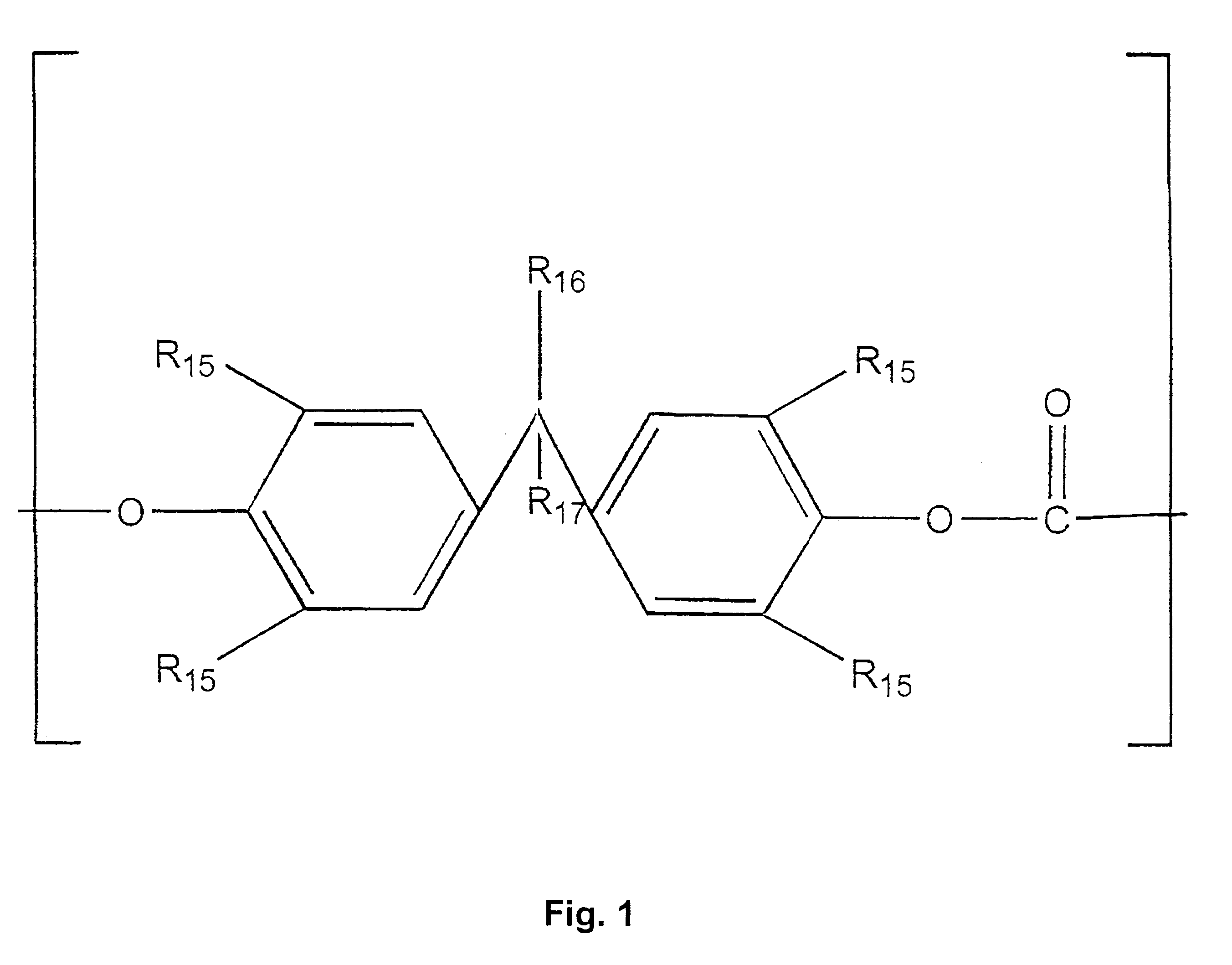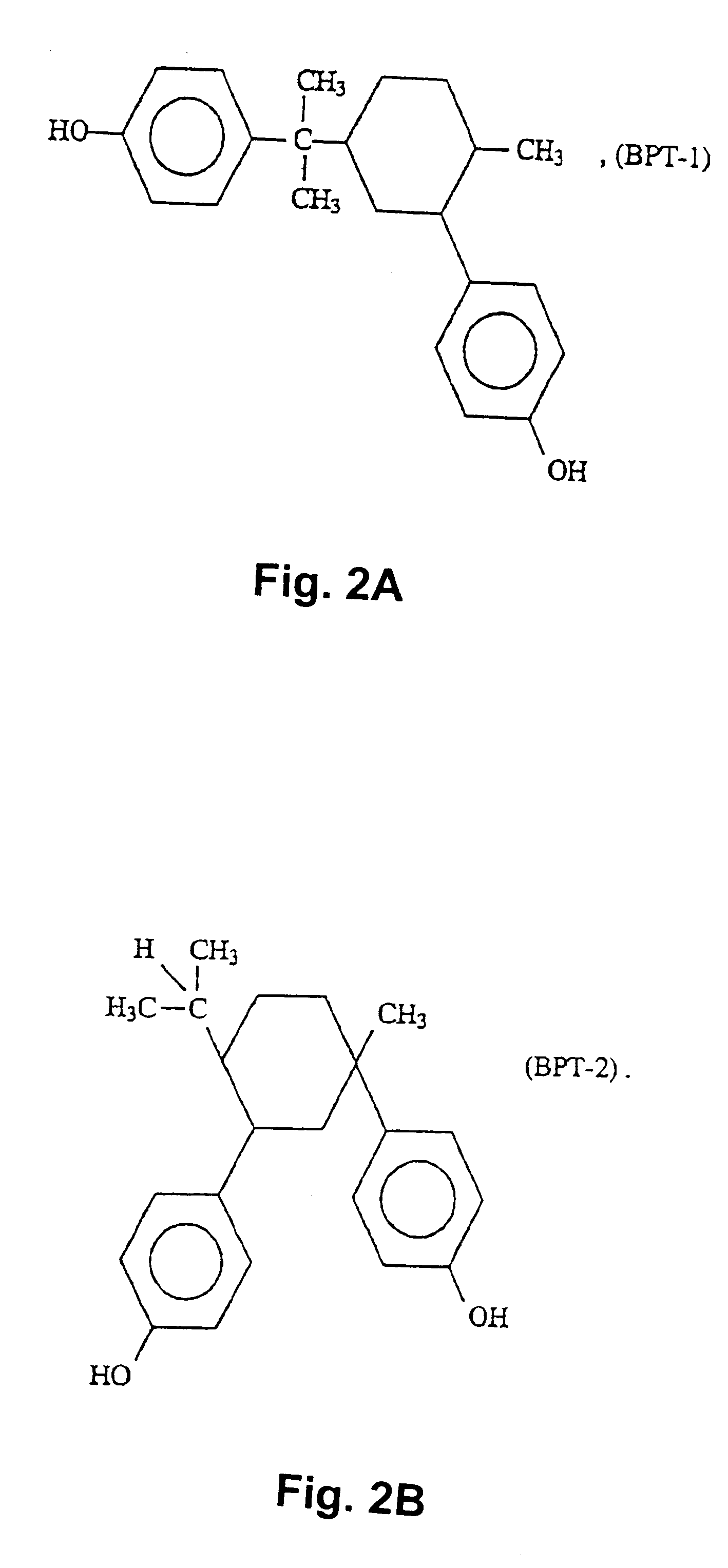Polycarbonate blends and method of making same
a polycarbonate and blend technology, applied in the field of composite polycarbonate blends, can solve the problems of insufficient bpa toughness of materials, insufficient production of copolymers to achieve specific characteristics, and inability to meet the requirements of specific characteristics, so as to achieve the effect of reducing toughness, increasing tg, and reducing tg
- Summary
- Abstract
- Description
- Claims
- Application Information
AI Technical Summary
Benefits of technology
Problems solved by technology
Method used
Image
Examples
example 1
Bisphenol A (29.4 g, 0.13 mol) and a 30 / 70 blend of BPT1 / BPT2 (41.6 g, 0.13 mol) were charged to a 2 L agitated reactor along with methylene chloride (500 L), water (300 L), triethylamine (0.5 ml) and p-cumylphenol (1.61 g). Phosgene (30 g, 0.3 mol) was added at 2 g / min rate while the pH was held at 10.0-10.50 by controlled addition of a 50% caustic solution. The resulting polymer solution was separated from the brine layer, washed with dilute HCl solution, and then washed with water until the level of titratable chloride was less than 3 ppm. The polymer solution was slowly added to hot water, and the precipitated resin was dried at 115.degree. C. for 6 hours. The resulting resin was used as a compatabilizer (50% BPA / 50% menthane bisphenol) in accordance with the invention.
example 2
The experiment of the comparative example was repeated, but with the inclusion of the compatabilizer of Example 1. Three mixtures in methylene chloride were prepared in which the ratios of compatabilizer / BPA polycarbonate / menthane bisphenol polycarbonate were 2:1:2,1:2:1, 1:1:1 and 1:1:2 by weight. Tg values for the films were determined by DSC. In each case, a single Tg value was obtained. The values were 185.degree. C., 161.degree. C., 196.degree. C. and 206.degree. C. for the three blends, respectively. A 1:1 BPA:menthane bisphenol blend exhibited to values of Tg (155.degree. C. and 210.degree. C.) as did a 2:9:9 compatabilizer / BPA / menthane bisphenol blend (Tg=155.degree. C. and 209.degree. C.). The value of 161.degree. C. is lower by about 15.degree. C. than would be predicted based on Tg of the individual components, but it is reproducible.
PUM
| Property | Measurement | Unit |
|---|---|---|
| mol % | aaaaa | aaaaa |
| mol % | aaaaa | aaaaa |
| mol % | aaaaa | aaaaa |
Abstract
Description
Claims
Application Information
 Login to View More
Login to View More - R&D
- Intellectual Property
- Life Sciences
- Materials
- Tech Scout
- Unparalleled Data Quality
- Higher Quality Content
- 60% Fewer Hallucinations
Browse by: Latest US Patents, China's latest patents, Technical Efficacy Thesaurus, Application Domain, Technology Topic, Popular Technical Reports.
© 2025 PatSnap. All rights reserved.Legal|Privacy policy|Modern Slavery Act Transparency Statement|Sitemap|About US| Contact US: help@patsnap.com


